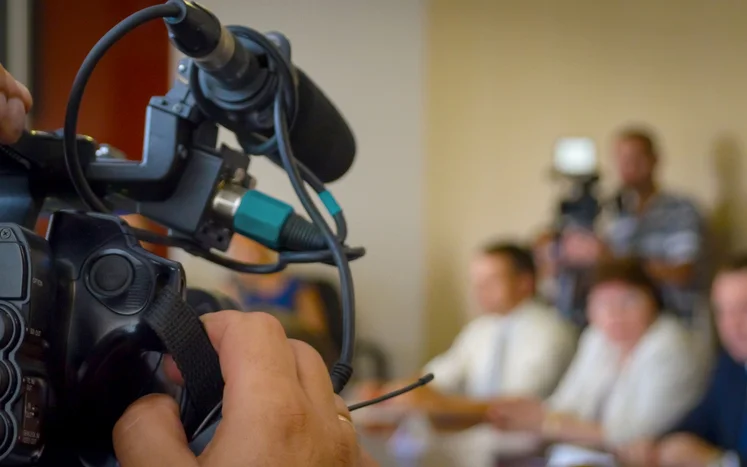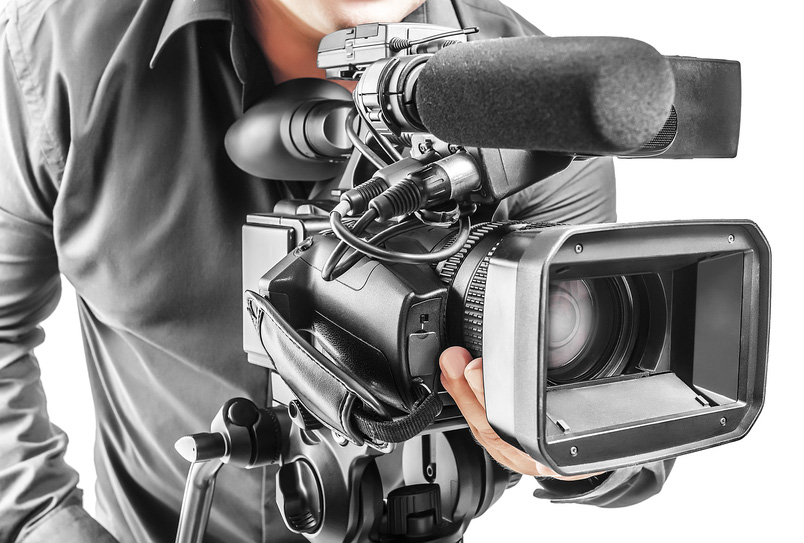Trick Factors to Consider When Working With Legal Videography Professionals
Trick Factors to Consider When Working With Legal Videography Professionals
Blog Article
Digging Into the Devices of Lawful Videography: Introduction Its Procedure in Shielding Authentic Visual Testimony for Judicial Proceedings
In the world of judicial process, the function of legal videography stands as a cornerstone in preserving and offering aesthetic evidence. As technology proceeds to breakthrough, the systems behind legal videography have come to be significantly intricate, providing an important layer of credibility to testaments captured on video. By diving right into the operational intricacies of lawful videography, one can reveal the careful processes that secure the honesty of aesthetic evidence provided in court rooms - Legal Videography. This exploration not just drops light on the historic advancement of lawful videography however likewise means the future fads that might even more change how aesthetic testaments are maintained in the realm of justice.
Historic Development of Lawful Videography
Checking out the historic development of legal videography discloses a significant transformation in the recording and discussion of visual evidence within the legal landscape. In the past, legal process greatly relied upon created photographs and transcripts to record events and give evidence. Nevertheless, with the advent of video clip innovation, the legal sector saw a standard change in how aesthetic testament was caught and presented.
The advancement of lawful videography can be mapped back to the late 20th century when innovations in video recording tools made it much more available for usage in courts. This technological innovation not only boosted the accuracy and integrity of visual evidence however additionally reinvented the means cases were offered to courts and courts (Legal Videography). Lawyers started to recognize the persuasive power of video recordings in sharing emotions, nuances, and non-verbal signs that composed photographs or transcripts alone can not capture effectively

Modern Technology Developments in Video Clip Documents
What essential technical improvements have transformed video documents in the legal area? The legal area has seen considerable improvements in video clip documents innovation that have actually enhanced the authenticity and dependability of visual proof in judicial procedures. One of the essential developments is high-definition (HD) video recording abilities, which give crystal-clear images and sharp information that are crucial for precisely catching statements, faces, and other aesthetic signs. In addition, the combination of timestamping and metadata functions in video clip paperwork devices has actually allowed accurate paperwork of when and where the video clip was taped, ensuring the honesty of the proof presented in court.
In addition, developments in video file encryption and watermarking innovations have actually reinforced the safety and security and tamper-proof nature of video clip evidence, securing it versus unauthorized modifications or tampering. Furthermore, the advent of cloud storage options and remote accessibility capacities has streamlined the storage, retrieval, and sharing of video clip proof, promoting smooth partnership among attorneys and making sure effective access to important aesthetic testimonies when required. These technical innovations in video clip documents have actually undoubtedly revolutionized the legal field, enhancing the precision, reliability, and admissibility of visual evidence in judicial process.
Duty of Lawful Videographers in Court Settings
The evolution of video clip paperwork innovation in the legal area has necessitated an essential duty for lawful videographers in courtroom setups, making sure the stability and find more info reliability of aesthetic statements presented throughout judicial proceedings. Lawful videographers play an essential role in catching and maintaining accurate aesthetic proof that can be critical in lawsuit. Their responsibility encompasses establishing equipment, videotaping procedures, and generating top notch videos that properly reflect the occasions in the courtroom.
Additionally, legal videographers commonly function very closely with lawful teams to ensure that the video evidence lines up with the situation's requirements and can be efficiently offered in court to support the lawful disagreements being made. Generally, the duty of lawful videographers in court room setups is indispensable in upholding the principles of justice and guaranteeing the transparency of legal proceedings. Legal Videography.

Ensuring Admissibility and Honesty of Video Evidence
To keep the reliability of aesthetic proof presented in legal procedures, making certain the admissibility and integrity of video proof is a critical obligation for lawful videographers. Admissibility describes the acceptance of evidence by the court, and for video proof to be permissible, it has to meet certain requirements. Lawful videographers play a critical role in guaranteeing that the videos they catch follow the regulations of evidence, such as credibility, importance, and integrity.
Honesty of video clip proof entails preserving the originality and accuracy of the footage from the time it is recorded until it exists in court. This consists of firmly keeping the video data, documenting the chain of safekeeping, and avoiding any type of tampering or modifications. Legal videographers need to follow stringent methods to ensure the stability of the video proof and protect this content against any kind of difficulties to its authenticity.
Future Trends in Legal Videography
Given the raising dependence on innovation in legal proceedings, lawful videographers are poised to embrace cutting-edge improvements shaping the future of visual testament capture and presentation. One of the noticeable patterns coming up is the assimilation of online reality (VIRTUAL REALITY) and enhanced reality (AR) modern technologies into lawful videography. These innovations have the potential to change exactly how visual proof is presented in court rooms, allowing courts and judges to submerse themselves in the scene of the crime or case.
Additionally, making use of artificial knowledge (AI) algorithms for video clip analysis is anticipated to streamline the procedure of reviewing and examining large amounts of video clip footage. AI can assist in determining key minutes, abnormalities, and patterns within videos, improving the efficiency of legal examinations.

Final Thought
Finally, lawful videography has played a critical function in providing genuine visual proof for judicial proceedings. With technological improvements and the knowledge of lawful videographers, the integrity and admissibility of video clip proof are guaranteed in court room settings. As legal videography proceeds to develop, it will certainly be necessary to maintain standards that preserve the precision and reliability of visual testament for the future of lawful proceedings.
Taking a look at the historic progression of legal videography discloses a significant change in the recording and discussion of visual evidence within the legal landscape.The advancement of video clip documentation innovation in the legal area has actually necessitated an essential function for lawful videographers in court room setups, ensuring the integrity and dependability of aesthetic testaments offered throughout judicial proceedings. Additionally, legal videographers typically work carefully with legal teams to make sure that the video clip evidence straightens with the case's demands and useful site can be effectively provided in court to sustain the lawful disagreements being made.To preserve the reputation of aesthetic proof offered in lawful process, making certain the admissibility and honesty of video clip proof is an important duty for lawful videographers. As legal videography continues to develop, it will be important to support standards that keep the precision and dependability of visual testimony for the future of legal process.
Report this page